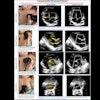Thanks to stringent radiation protection policies, the cancer risk for modern imaging professionals has been significantly reduced. Unfortunately, the same cannot be said for their predecessors, who showed markedly higher rates of disease, according to a meta-analysis in the journal Radiology.
Shinji Yoshinaga, Ph.D., and colleagues from Japan and the U.S. reviewed previously published epidemiologic data on cancer risks in more than 270,000 international radiologists and technologists.
While close attention should be paid to the risk posed to patients from localized, high radiation doses, the detrimental effects of worker exposure to low doses over the whole body should not be neglected, said Yoshinaga, who is from the National Cancer Institute (NCI) in Bethesda, MD, and the National Institute for Radiological Sciences in Chiba, Japan. Yoshinaga's co-authors are also from the NCI.
The authors compiled data from eight studies conducted in the U.S., the U.K., Denmark, China, Japan, and Canada between 1920 and 1998.
"These cohorts represent a valuable source of information obtained from a large number of people who worked over several decades during which modern radiology and radiologic protection evolved," they wrote (Radiology, September 16, 2004).
The authors parsed the earlier studies for the standardized mortality ratio (SMR), or the ratio of the number of deaths, and the standardized incidence ratio (SIR), which is the ratio of the number of incident cases. The specific disease processes they examined included leukemia, melanoma, and breast cancer.
Their two main findings were as follows: Increased mortality due to leukemia was found among radiology professionals who worked before 1950, when recommended radiation doses started at a high of 30 Gy per year, before dropping to 0.3 Sv per year, and then down to 0.1 Sv per year.
The SMR/SIR was 1.75-2.29 for leukemia found in U.S. radiologists, Japanese technologists, and male Chinese x-ray workers. From 1920-1939, the SMR was 1.38 for all cancers in U.S. radiologists versus other physician specialties.
For women workers employed between 1940 and 1949, the relative risk for breast cancer was elevated (2.17), especially if they'd been exposed to radiation for one to four years. The authors noted a particular trend among pre-1950 Canadian radiation workers: Melanoma was limited to dental workers, who may have held bitewing film in patients' mouths during x-ray, resulting in high exposure to their hands.
Second, lower exposure levels were recorded after 1957, when the International Commission on Radiological Protection (ICRP) reduced the suggested dose limit to 0.05 Sv per year. In 1990, the commission revamped that policy to an occupational dose limit of an average of 0.02 Sv per year, over five years, and not to exceed an annual dose of 0.05 Sv in a single year.
After 1950, the SMR for all types of cancer was less than 1. In addition to better dose parameters, a trend known as the "healthy-worker effect" may have contributed to the reduction as these professionals tend to lead healthier lifestyles and have better access to medical care, the authors stated.
"We found no clear evidence of cancer risk in any of the latest subcohorts of radiologists or technologists," the group concluded. "While safe radiation practices currently are an assumed part of medical radiation work ... it is important to continue follow-up."
Future research should include data on individual doses to radiation workers, which would allow for a direct comparison of risk between high-dose and low-dose settings. In addition, the authors cautioned that workers from 1960-1982 have yet to enter the time period when background cancer risk is increased. Radiation protection practices will require updates based on exposure levels of new radiologic procedures.
By Shalmali Pal
AuntMinnie.com staff writer
September 21, 2004
Related Reading
Full-body screening elevates cancer mortality risk, August 31, 2004
Some radiologic technologists at increased risk for melanoma, March 4, 2004
Breast cancer mortality high in x-ray techs who worked before 1950, June 20, 2002
ARRT study assesses technologists' cancer risk, May 3, 2002
Copyright © 2004 AuntMinnie.com



















